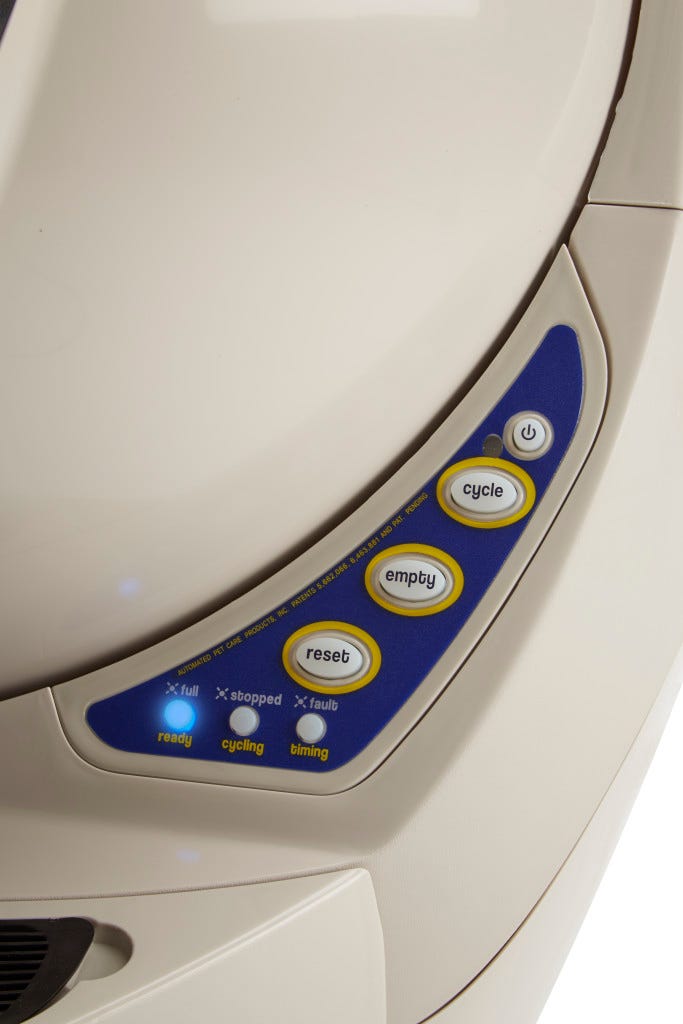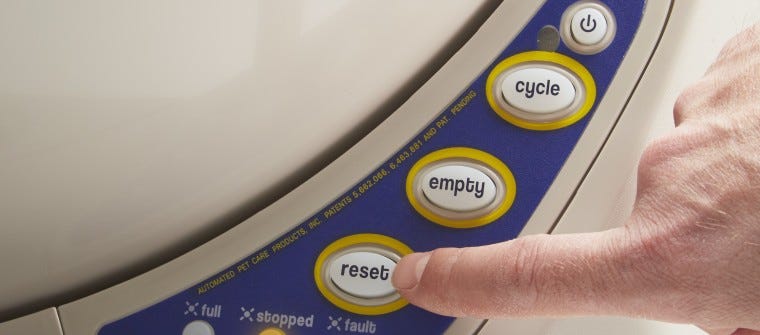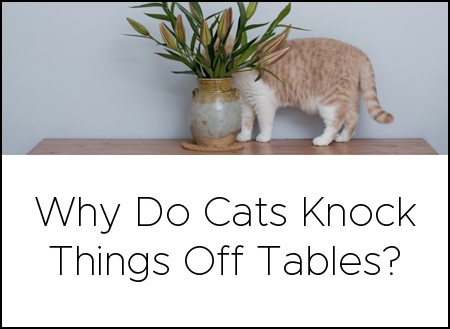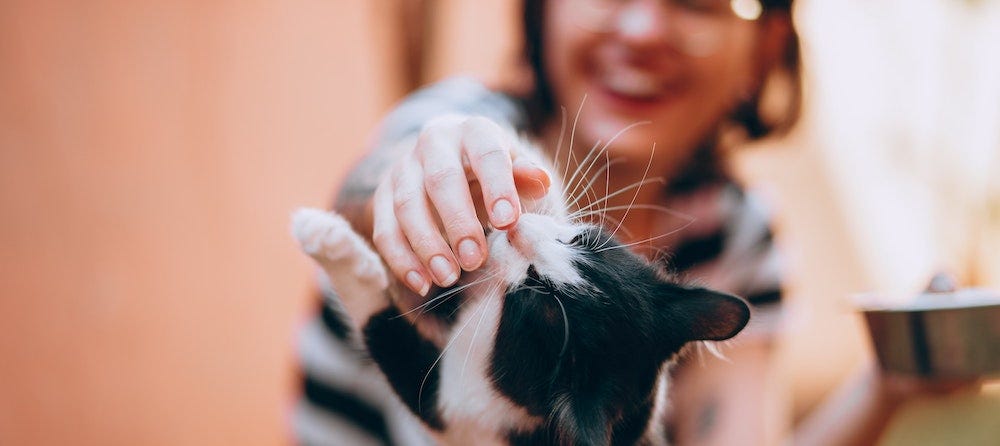One of the most common troubleshooting situations for Litter-Robot 3 users can be solved with the press of a button—the Reset button.
To understand why and see if it can solve an issue you're having, read on.
The Cat Sensor
 Litter-Robot at standby (solid blue light).
Litter-Robot at standby (solid blue light).
The Litter-Robot relies on the Cat Sensor to know when your cat is inside and when it's time to clean up. The Cat Sensor is a weight-sensitive switch that measures the weight of the unit, so it can tell when there's a change and what that change means.
Each time the unit is powered on and at the end of each Clean cycle, the Cat Sensor measures the weight of the unit. The Cat Sensor then uses that weight as its new baseline. When the cat enters, the Cat Sensor detects increased weight, and knows not to perform a Clean cycle. When the cat exits, the Cat Sensor detects a decrease in weight (an almost complete return to its baseline), and allows the countdown to a Clean cycle to begin. Eventually (3, 7, or 15 minutes later—whatever you have your unit set to), a Clean cycle will start, and upon finishing, the Cat Sensor will take another measurement of the weight to use as its new baseline.
A good practice, then, is to power the unit off before making any changes that will affect its weight, including:
- emptying the Waste Drawer,
- adding litter to the Globe, or
- cleaning or moving the unit.
When you're done, turn the unit back on. It will cycle, then return to the Home position with the blue light on, and the Cat Sensor will take a new reading of the unit's weight—assuring your Litter-Robot will function properly.
The Reset Button
The Reset button is so named because it resets the Cat Sensor. You can think of the Cat Sensor as the scale and the Reset button as a way to zero the scale.
To reset the Cat Sensor, the unit must be at the Home position with a solid blue light displayed on the control panel. If you press Reset while the unit is cycling, it will pause the cycle; simply press Cycle to restart the cycle or Reset to abort the cycle and return the Globe to the Home position. (If you press and hold the Reset button for about five seconds, you will activate Control Panel Lockout mode, which disables button functions to keep pesky button pushers from changing your settings; simply press and hold again to deactivate.)
To reset the Cat Sensor, press Reset when the unit is at the Home position and the control panel displays a solid blue light.
Press the Reset button firmly and quickly, then watch for the blue light to flash to confirm you have successfully reset the Cat Sensor. On some units, the blue light will flash quickly (press Reset again if you think you missed it!), and on other units, the blue light will flash once quickly, then once slowly, before returning to its solid blue standby state (on both types of units). Be careful not to rest on the unit as you press the Reset button or your weight will influence the baseline reading of the unit and throw off the Cat Sensor.
As the unit gains weight from use (your cat's waste, that is), the Cat Sensor measures that change after each Clean cycle and continues to make the unit more sensitive to small changes in weight. If you press the Reset button hard, for more than one second, or lean on the unit (set your hand on Bonnet, etc.), the Cat Sensor will consider that weight in its adjustment, resulting in a bad reading. Make sure to press the Reset button firmly and quickly, without putting any other pressure on the unit.
You can also turn the unit off then on to reset the Cat Sensor and ensure the baseline is set properly.
Get an Accurate Reading
 Press the Reset button after you do anything that affects the unit's weight (such as adding litter, removing waste, or cleaning or moving the unit).
Press the Reset button after you do anything that affects the unit's weight (such as adding litter, removing waste, or cleaning or moving the unit).
It may seem pretty straightforward (just the press of a button!), but there may be other factors affecting the Cat Sensor's ability to get an accurate measurement—so even when you're pressing the Reset button correctly, the reading is flawed.
Check your unit for the following:
The unit is making even contact with a firm surface.
Make sure your Litter-Robot is sitting on firm, level ground. The reading can be thrown off by carpeting because it absorbs some of the unit's weight, which would make the unit think it's lighter than it actually is. Or, if your Litter-Robot is on tile floor, it may wobble on the grout lines, resulting in unreliable readings. If you must keep your Litter-Robot on these surfaces, place a board underneath to ensure even contact with a firm surface.
The unit isn't pushed into a corner or against a wall or piece of furniture.
Make sure your Litter-Robot is free-standing and not leaning on anything. After emptying the Waste Drawer and pushing the drawer back into place, double check that you haven't pushed the whole unit up against anything before pressing Reset.
Objects aren't resting or pressing on the unit.
Make sure nothing is putting weight on the unit. Check that homemade cabinets or shelves around the unit, your errant laundry, or your other hand isn't touching the unit when you press the Reset button.
Now that you know how important the Cat Sensor is and how the Reset button functions, you'll know what to do if an issue arises. Any time you interact with your Litter-Robot—either on purpose for maintenance or accidentally because you nudged it—the best practice is to check the environment to make sure it's free-standing, then hit the Reset button. A reliable baseline reading will ensure your Cat Sensor functions properly to detect your cat and clean up—so you don't have to!
For more information about your self-cleaning litter box, review the Instruction Manual or visit our Support Articles.
Recommendations








